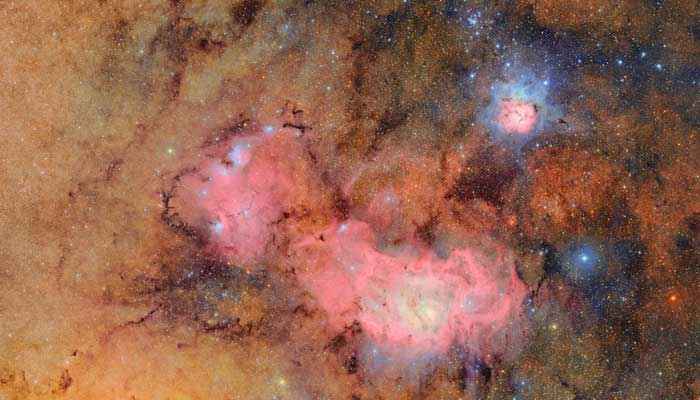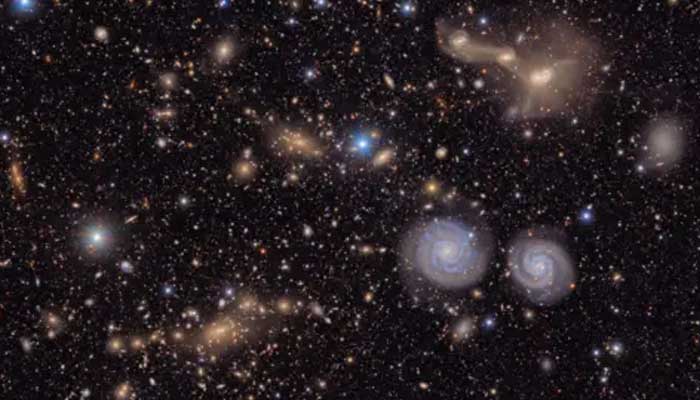Washington: The team behind the long -awaited Vera Rubin Observatory in Chile published its first images on Monday, revealing breathtaking views of stars formation regions as well as distant galaxies.
More than two decades in the manufacture, the giant telescope funded by the United States is perched at the top of Cerro Pamachi in the center of Chile, where the dark and dry air provide ideal conditions to observe the cosmos.
One of the first images is a composite of 678 exhibitions supported only seven hours, capturing the trifid nebula and the lagoon nebula – both thousand light years of the earth – shiny in bright roses against the orange red sets.
The image reveals these stellar nurseries in our Milky Way in unprecedented details, with functionalities previously weak or invisible now clearly visible.
Another image offers a panoramic view of the virgin group of galaxies.
The team also published a video nicknamed the “Cosmic Treasure Chest”, which begins with a close -up of two galaxies before zooming to reveal about 10 million more.

“The Rubin Observatory is an investment in our future, which will today put a cornerstone of knowledge on which our children will proudly build tomorrow,” said Michael Kratsios, director of the White House science and technological office.
Equipped with an advanced 8.4 -meter -made telescope and the largest digital camera ever built, the Rubin observatory is supported by a powerful data processing system.
Later this year, he will start his flagship project, the Legacy Survey of Space and Time (LSST). During the next decade, he will scan the night sky every evening, even capturing the most subtle visible changes with unequaled precision.
The observatory bears the name of the American astronomer Pioneer Vera C Rubin, whose research provided the first conclusive proof of the existence of dark matter – a mysterious substance which does not emit light but exerts a gravitational influence on the galaxies.

Black energy refers to the equally mysterious and extremely powerful force which leads to the accelerated expansion of the universe. Together, dark matter and dark energy represent 95% of the cosmos, but their true nature remains unknown.
The observatory, a joint initiative of the US National Science Foundation and the Department of Energy, was also hailed as one of the most powerful tools ever for the monitoring of asteroids.
In just 10 hours of observations, the Rubin Observatory discovered 2,104 asteroids previously not detected in our solar system, including seven objects close to the Earth – which represent no threats.
For comparison, all other ground -based observatories and combined spaces discover around 20,000 new asteroids per year.
Rubin should also be the most effective observatory for identifying interstellar objects crossing the solar system.
More images from the observatory should be published later Monday morning.




